Volume 1 | Number 2 | November 2009
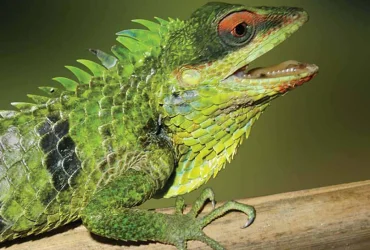 v1i2.22
v1i2.22ISSN: 1800-427X (print)
eISSN: 1800-427X (online)
DOI:10.47605/tapro.v1i2.22
Submitted date: 30 August 2009
Accepted date: 12 October 2009
Published date: 22 November 2009
Pp. 135–136.
COMMON SKINK Eutropis carinata (REPTILIA : SCINCIDAE) FEED ON ENDEMIC SEMI-SLUG Ratnadvipia irradians (LIMACOIDEA : ARIOPHANTIDAE)
D.M.S. Suranjan Karunarathna & A.A. Thasun Amarasinghe*
*Corresponding author. E-mail: thasun.taprobanica@gmail.com
The skinks belong to the genus Eutropis is widely distributed in South and South East Asia and is represented in Sri Lanka by seven species, the largest and the most common of which is common skink Eutropis carinata (Schneider, 1801). In Sri Lanka E. carinata is widely distributed in open areas, closed canopy forest, home gardens and plantations in wet and dry zones below 1,000 m altitude. The Sri Lankan endemic semi-slug genus Ratnadvipia consists of two species, Ratnadvipia irradians (Pfeiffer, 1853) and Ratnadvipia karui Raheem & Naggs, 2006. Ratnadvipia is almost exclusively confined to the tropical lowland rain forests, intermediate zone and up to the suitable habitats within the dry zone. Although snails are usually not an item of skink diet, we have observed a semi-slug in E. carinata gut.
Section Editor: Sujan Henkanaththegedara
eISSN: 1800-427X (online)
DOI:10.47605/tapro.v1i2.22
Submitted date: 30 August 2009
Accepted date: 12 October 2009
Published date: 22 November 2009
Pp. 135–136.
COMMON SKINK Eutropis carinata (REPTILIA : SCINCIDAE) FEED ON ENDEMIC SEMI-SLUG Ratnadvipia irradians (LIMACOIDEA : ARIOPHANTIDAE)
D.M.S. Suranjan Karunarathna & A.A. Thasun Amarasinghe*
*Corresponding author. E-mail: thasun.taprobanica@gmail.com
The skinks belong to the genus Eutropis is widely distributed in South and South East Asia and is represented in Sri Lanka by seven species, the largest and the most common of which is common skink Eutropis carinata (Schneider, 1801). In Sri Lanka E. carinata is widely distributed in open areas, closed canopy forest, home gardens and plantations in wet and dry zones below 1,000 m altitude. The Sri Lankan endemic semi-slug genus Ratnadvipia consists of two species, Ratnadvipia irradians (Pfeiffer, 1853) and Ratnadvipia karui Raheem & Naggs, 2006. Ratnadvipia is almost exclusively confined to the tropical lowland rain forests, intermediate zone and up to the suitable habitats within the dry zone. Although snails are usually not an item of skink diet, we have observed a semi-slug in E. carinata gut.
Section Editor: Sujan Henkanaththegedara
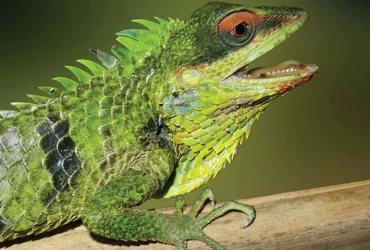 v1i2.21
v1i2.21ISSN: 1800-427X (print)
eISSN: 1800-427X (online)
DOI:10.47605/tapro.v1i2.21
Submitted date: 15 June 2009
Accepted date: 15 October 2009
Published date: 22 November 2009
Pp. 130–134.
DISTRIBUTION PATTERNS OF THE GENUS Paludomus (GASTROPODA : THIARIDAE : PALUDOMINAE) IN MAHAWELI, KELANI, KALU, GIN AND MAHA-OYA RIVER BASINS OF SRI LANKA
A.A. Thasun Amarasinghe* & S.R. Krishnarajah
*Corresponding author. E-mail: thasun.taprobanica@gmail.com
Abstract
Since the publication of Preston’s Fauna of British India – Freshwater Gastropoda and Pelcypoda in 1915, a vast amount of knowledge has accumulated on the fresh water molluscs. Starmühlner (1974) published a monograph on the fresh water gastropods, in which he listed 31 species of freshwater snails from Sri Lanka. Until the early 20th century, malacologists used mainly conchological characters to describe species. However, the shells of freshwater gastropods are highly variable, show ecological plasticity, and are known to suffer from convergence and homoplasy, and therefore do not always reliably reflect systematic boundaries. It is already known that other groups of freshwater organisms in Sri Lanka including fish and crabs show high levels of endemism within individual river basins. It remains to be discovered whether molluscs too, show such basin-level endemism. These studies also found that there was significant altitudinal stratification and basin-level endemism of species, a factor that remains to be assessed for aquatic molluscs. In order to address these questions, and assess the diversity of this fauna, we surveyed the freshwater mollusc fauna (focusing mainly on the genus Paludomus) in the Mahaweli, Kelani, Kalu, Gin and Maha-Oya River basins of Sri Lanka. A total of 10 morphospecies were recorded, based on examination of 20 specimens of each species from 20 locations in the altitude range 100-2000 m above mean sea level. Species-level identification is in progress, and further surveys are needed to assess the full diversity of this important fauna.
Key words : aquatic conservation, distribution, freshwater gastropods
Section Editor: Brenden Holland
eISSN: 1800-427X (online)
DOI:10.47605/tapro.v1i2.21
Submitted date: 15 June 2009
Accepted date: 15 October 2009
Published date: 22 November 2009
Pp. 130–134.
DISTRIBUTION PATTERNS OF THE GENUS Paludomus (GASTROPODA : THIARIDAE : PALUDOMINAE) IN MAHAWELI, KELANI, KALU, GIN AND MAHA-OYA RIVER BASINS OF SRI LANKA
A.A. Thasun Amarasinghe* & S.R. Krishnarajah
*Corresponding author. E-mail: thasun.taprobanica@gmail.com
Abstract
Since the publication of Preston’s Fauna of British India – Freshwater Gastropoda and Pelcypoda in 1915, a vast amount of knowledge has accumulated on the fresh water molluscs. Starmühlner (1974) published a monograph on the fresh water gastropods, in which he listed 31 species of freshwater snails from Sri Lanka. Until the early 20th century, malacologists used mainly conchological characters to describe species. However, the shells of freshwater gastropods are highly variable, show ecological plasticity, and are known to suffer from convergence and homoplasy, and therefore do not always reliably reflect systematic boundaries. It is already known that other groups of freshwater organisms in Sri Lanka including fish and crabs show high levels of endemism within individual river basins. It remains to be discovered whether molluscs too, show such basin-level endemism. These studies also found that there was significant altitudinal stratification and basin-level endemism of species, a factor that remains to be assessed for aquatic molluscs. In order to address these questions, and assess the diversity of this fauna, we surveyed the freshwater mollusc fauna (focusing mainly on the genus Paludomus) in the Mahaweli, Kelani, Kalu, Gin and Maha-Oya River basins of Sri Lanka. A total of 10 morphospecies were recorded, based on examination of 20 specimens of each species from 20 locations in the altitude range 100-2000 m above mean sea level. Species-level identification is in progress, and further surveys are needed to assess the full diversity of this important fauna.
Key words : aquatic conservation, distribution, freshwater gastropods
Section Editor: Brenden Holland
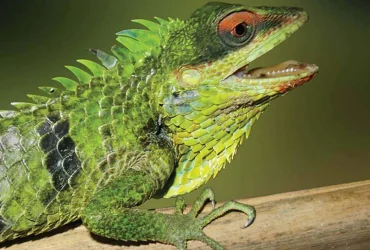 v1i2.20
v1i2.20ISSN: 1800-427X (print)
eISSN: 1800-427X (online)
DOI:10.47605/tapro.v1i2.20
Submitted date: 06 August 2009
Accepted date: 28 September 2009
Published date: 22 November 2009
Pp. 126–129.
RECORD OF Oreochromis aureus (STEINDACHNER, 1864) (TELEOSTEI : PERCIFORMES : CICHLIDAE) IN THE NATURAL WATERS OF TAMIL NADU, INDIA
J.D. Marcus Knight* & K. Rema Devi
*Corresponding author. E-mail: jdmarcusknight@yahoo.co.in
Of the many fish introduced globally for aquaculture, Tilapia can be considered as the most widely introduced species. The Mozambique Tilapia, Oreochromis mossambicus Peters, 1852, was the first species to be widely introduced for aquaculture. FAO Database on Introductions of Aquatic Species (2000 - 2009) states that O. mossambicus was first introduced to India during the year 1952 from Sri Lanka and Thailand for aquaculture with the idea of reservoir fisheries. O. niloticus Linnaeus, 1758, was introduced to India as late as 1990 from Thailand. O. mossambicus has found its way into the list of 100 of the World’s worst Invasive Alien Species published by Invasive Species Specialist Group (ISSG). It has established itself in the wild which may be attributed to intentional release or escapes from fish farms.
Section Editor: Upali Amarasinghe
eISSN: 1800-427X (online)
DOI:10.47605/tapro.v1i2.20
Submitted date: 06 August 2009
Accepted date: 28 September 2009
Published date: 22 November 2009
Pp. 126–129.
RECORD OF Oreochromis aureus (STEINDACHNER, 1864) (TELEOSTEI : PERCIFORMES : CICHLIDAE) IN THE NATURAL WATERS OF TAMIL NADU, INDIA
J.D. Marcus Knight* & K. Rema Devi
*Corresponding author. E-mail: jdmarcusknight@yahoo.co.in
Of the many fish introduced globally for aquaculture, Tilapia can be considered as the most widely introduced species. The Mozambique Tilapia, Oreochromis mossambicus Peters, 1852, was the first species to be widely introduced for aquaculture. FAO Database on Introductions of Aquatic Species (2000 - 2009) states that O. mossambicus was first introduced to India during the year 1952 from Sri Lanka and Thailand for aquaculture with the idea of reservoir fisheries. O. niloticus Linnaeus, 1758, was introduced to India as late as 1990 from Thailand. O. mossambicus has found its way into the list of 100 of the World’s worst Invasive Alien Species published by Invasive Species Specialist Group (ISSG). It has established itself in the wild which may be attributed to intentional release or escapes from fish farms.
Section Editor: Upali Amarasinghe
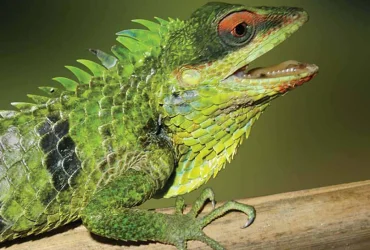 v1i2.19
v1i2.19ISSN: 1800-427X (print)
eISSN: 1800-427X (online)
DOI:10.47605/tapro.v1i2.19
Submitted date: 01 June 2009
Accepted date: Accepted: 08 July 2009
Published date: 22 November 2009
Pp. 123–125.
OBSERVATIONS OF A NEW COLORATION IN Philautus hoffmanni MEEGASKUMBURA & MANAMENDRA-ARACHCHI, 2005 (AMPHIBIA : RHACOPHORIDAE) FROM DUMBARA HIGHLANDS
A.A. Thasun Amarasinghe*, W.A.A.D. Gayan Pradeep & D.M.S. Suranjan Karunarathna
*Corresponding author. E-mail: thasun.taprobanica@gmail.com
Abstract
Philautus hoffmanni is considered the sister species of P. asankai. According to published literature the dorsal color of P. hoffmanni is usually pale green with reddish brown, ash and brown spots. White coloration in these frogs has not been reported previously even P. asankai shows ashy white. This white coloration of P. hoffmanni highlights again the close relation of this species with P. asankai. This is the second known case of white body coloration in this genus. This coloration is related to nycthemeral cycle, the same specimen being whitish at day, and pale green or brown at night.
Key words : color change, nycthemeral cycle, Philautus asankai, Sri Lanka
Section Editor: Alain Dubois
eISSN: 1800-427X (online)
DOI:10.47605/tapro.v1i2.19
Submitted date: 01 June 2009
Accepted date: Accepted: 08 July 2009
Published date: 22 November 2009
Pp. 123–125.
OBSERVATIONS OF A NEW COLORATION IN Philautus hoffmanni MEEGASKUMBURA & MANAMENDRA-ARACHCHI, 2005 (AMPHIBIA : RHACOPHORIDAE) FROM DUMBARA HIGHLANDS
A.A. Thasun Amarasinghe*, W.A.A.D. Gayan Pradeep & D.M.S. Suranjan Karunarathna
*Corresponding author. E-mail: thasun.taprobanica@gmail.com
Abstract
Philautus hoffmanni is considered the sister species of P. asankai. According to published literature the dorsal color of P. hoffmanni is usually pale green with reddish brown, ash and brown spots. White coloration in these frogs has not been reported previously even P. asankai shows ashy white. This white coloration of P. hoffmanni highlights again the close relation of this species with P. asankai. This is the second known case of white body coloration in this genus. This coloration is related to nycthemeral cycle, the same specimen being whitish at day, and pale green or brown at night.
Key words : color change, nycthemeral cycle, Philautus asankai, Sri Lanka
Section Editor: Alain Dubois
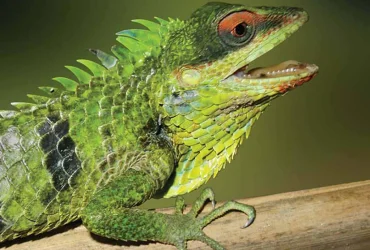 v1i2.18
v1i2.18ISSN: 1800-427X (print)
eISSN: 1800-427X (online)
DOI:10.47605/tapro.v1i2.18
Submitted date: 15 June 2009
Accepted date: 05 July 2009
Published date: 22 November 2009
Pp. 115–122.
A REVIEW OF THE DISTRIBUTION AND CONSERVATION STATUS OF Chamaeleo zeylanicus LAURENTI, 1768 (REPTILIA : CHAMAELEONIDAE) IN NORTH-WESTERN SRI LANKA
D.M.S. Suranjan Karunarathna, M.A.J. Saman Nawaratne & A.A. Thasun Amarasinghe*
*Corresponding author. E-mail: thasun.taprobanica@gmail.com
Abstract
In this paper we discuss the current status of Chamaeleo zeylanicus including some observations related to the ecology, behaviour, current distribution pattern and conservation issues, based on the north-western population of the species in Sri Lanka. The area from Puttalam to Wanatha-Villuwa has the highest abundance of this species in Sri Lanka. They are deliberately killed by people in this area due to mythical beliefs and folk stories related to this species. Unplanned agricultural practices also destroy their habitats. The Sri Lankan C. zeylanicus population may be different from Indian populations and their taxonomic status has not been investigated.
Key words : Behaviour, chamaeleon, conservation status, distribution, Sri Lanka
Section Editor: Aaron Bauer
eISSN: 1800-427X (online)
DOI:10.47605/tapro.v1i2.18
Submitted date: 15 June 2009
Accepted date: 05 July 2009
Published date: 22 November 2009
Pp. 115–122.
A REVIEW OF THE DISTRIBUTION AND CONSERVATION STATUS OF Chamaeleo zeylanicus LAURENTI, 1768 (REPTILIA : CHAMAELEONIDAE) IN NORTH-WESTERN SRI LANKA
D.M.S. Suranjan Karunarathna, M.A.J. Saman Nawaratne & A.A. Thasun Amarasinghe*
*Corresponding author. E-mail: thasun.taprobanica@gmail.com
Abstract
In this paper we discuss the current status of Chamaeleo zeylanicus including some observations related to the ecology, behaviour, current distribution pattern and conservation issues, based on the north-western population of the species in Sri Lanka. The area from Puttalam to Wanatha-Villuwa has the highest abundance of this species in Sri Lanka. They are deliberately killed by people in this area due to mythical beliefs and folk stories related to this species. Unplanned agricultural practices also destroy their habitats. The Sri Lankan C. zeylanicus population may be different from Indian populations and their taxonomic status has not been investigated.
Key words : Behaviour, chamaeleon, conservation status, distribution, Sri Lanka
Section Editor: Aaron Bauer
Hubungi Kami
The ultimate aim of the journal is to provide an effective medium for communication of the latest and best scientific information.
Copyright © 2020 Taprobanica. All Rights Reserved
Jasa Pembuatan Website by IKT




